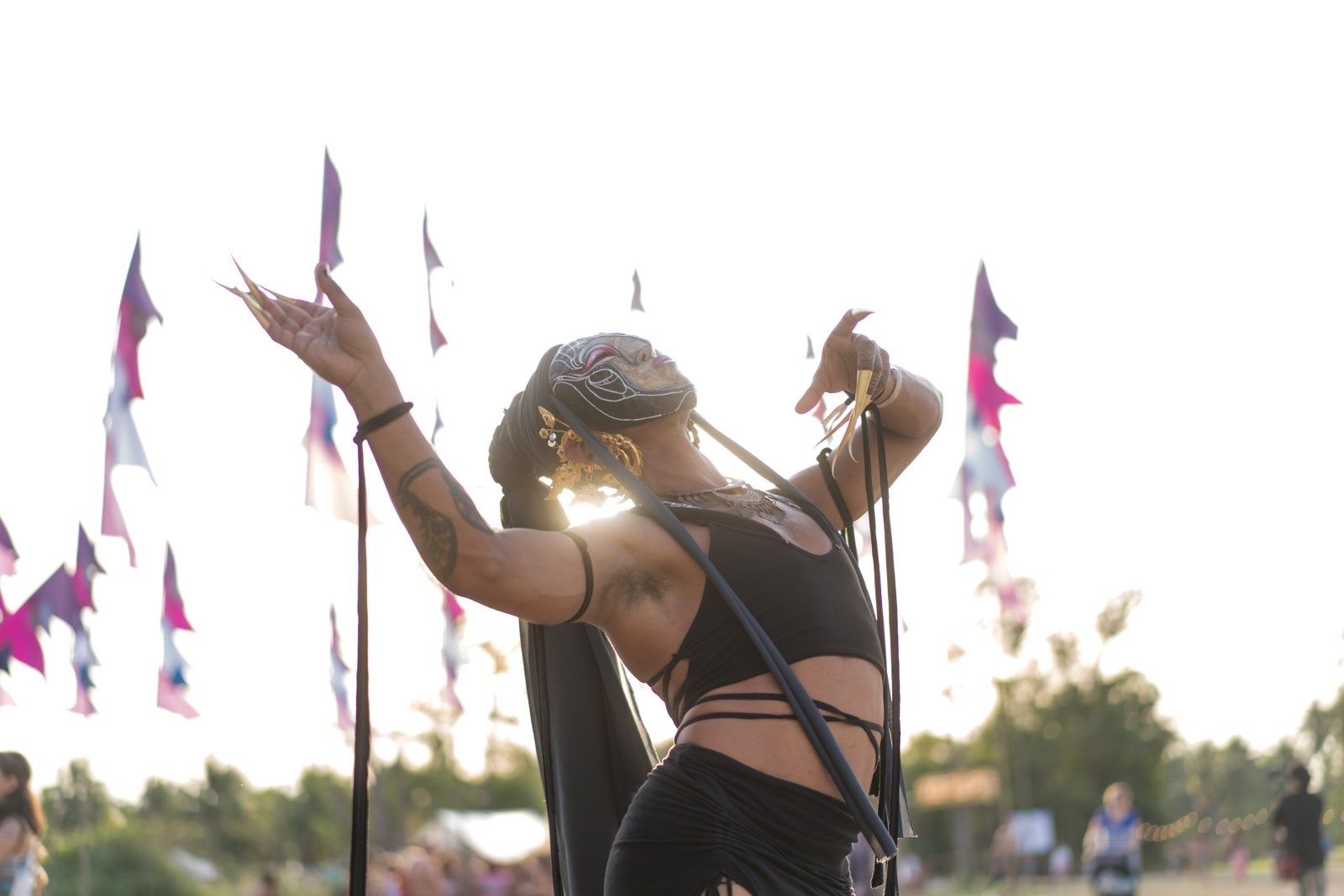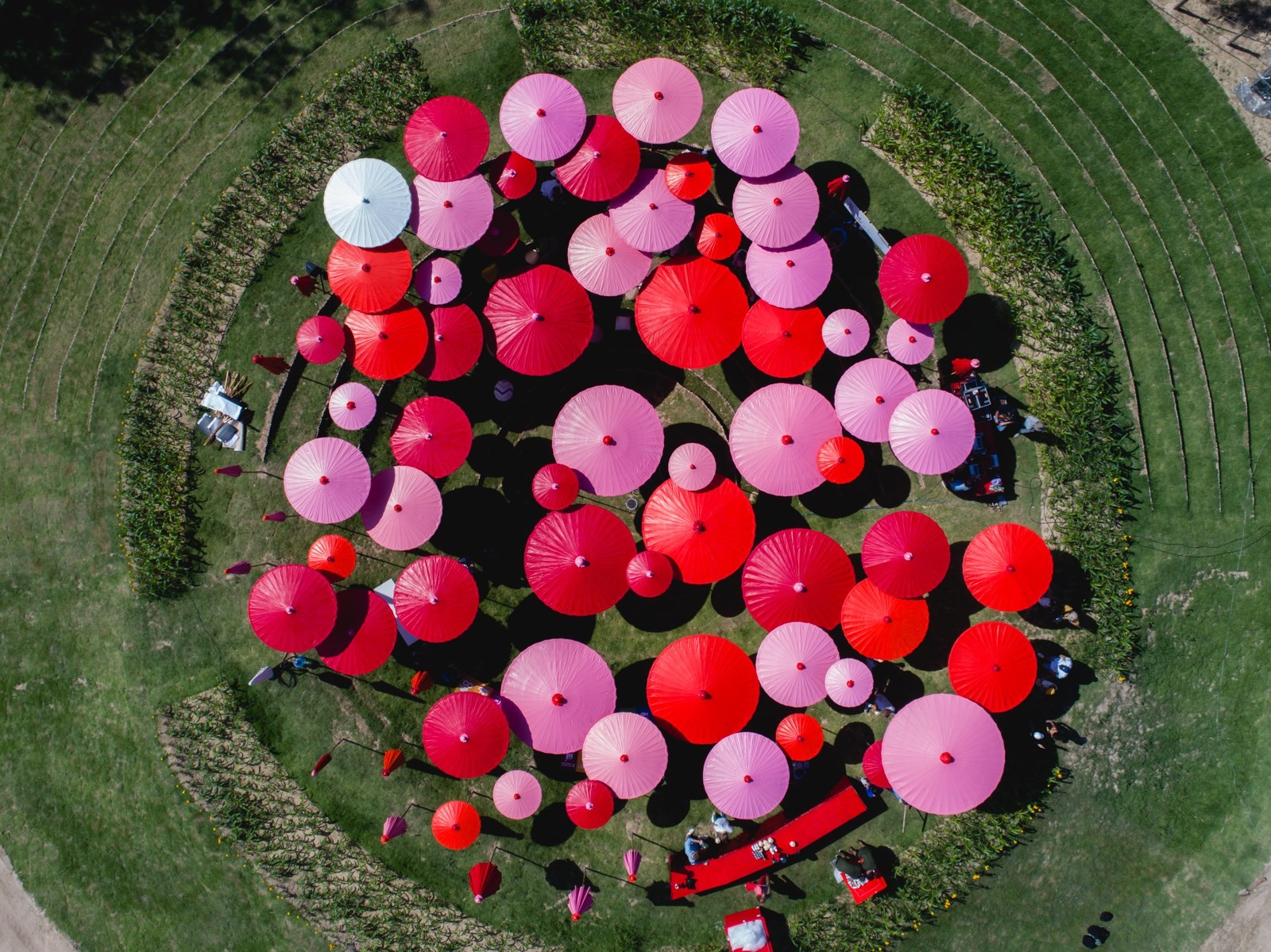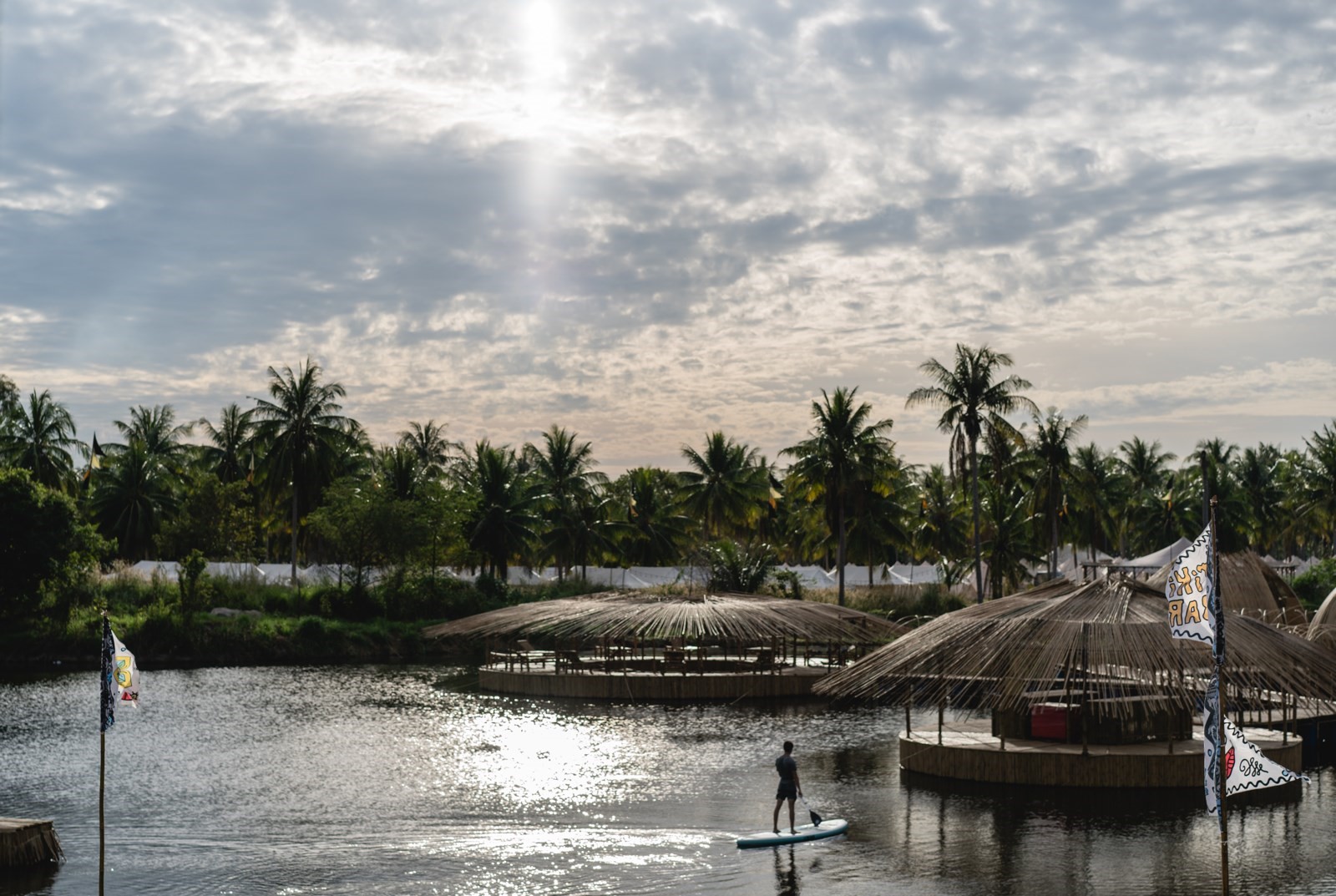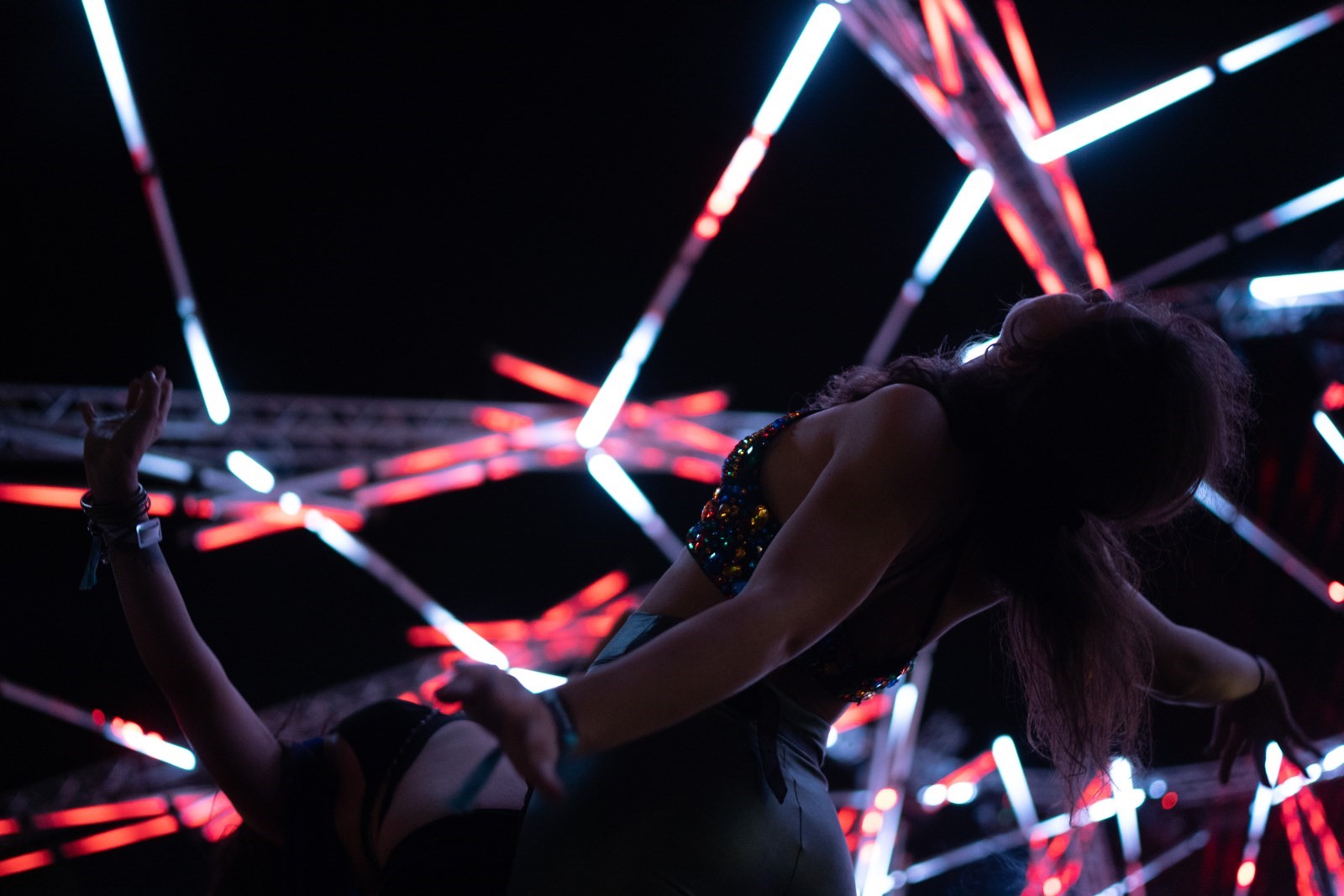Michelle Lhooq, founder of Weed Rave in L.A, speaks to the organisers behind music festivals Wonderfruit and Lightning in a Bottle about how to party with the planet in mind
I was dancing under a strobe-lit tree canopy at Wonderfruit – a sustainable music festival outside Pattaya, Thailand – when the realisation struck me like a bolt of lightning: eco-raves are the future. Fusing state-of-the-art technology with the inherent trippiness of nature to create biomorphic rave environments is a refreshing new vibe, especially when gritty warehouses – where techno has historically blossomed – have started to feel like dusty vestiges of our industrial past. As climate change fast becomes the defining issue of my generation, the need to stop destroying the planet every time we party is going from afterthought to urgent imperative. The future calls for sustainable solutions: a new party paradigm.
I took these green epiphanies back from Thailand to Los Angeles, where I started a party called Weed Rave earlier this year. Although my 500-person event was on a much smaller scale than Wonderfruit (which draws 17,000 people from all over the world), I was deeply inspired by the ethos and aesthetics of the Thai festival: we turned a loft in downtown LA into a laser-lit jungle, with weed bonsai plants; we practiced yoga under a full moon eclipse; we encouraged everyone to bring their own water bottles.

Still, I was dogged by some tricky questions: does being eco-friendly always mean that, as a promoter, you have to spend more money on your event – or are there ways to make it lucrative, too? How do you get people to change long-ingrained habits when they’re busy having a good time? And what’s the deal with carbon credits, anyway? So,I tracked down the Bangkok-based founders of Wonderfruit, Pranitan “Pete” Phornprapha and Jira “Jay” Montonn, to get some advice. For a wider range of perspectives, I also hit up another festival closer to home called Lighting in a Bottle, which takes place at Buena Vista Lake in Kern County, California this May, and is well-known for its eco-friendly ethos – including a “green team” of volunteers who roam the festival teaching people how to properly sort their trash.
So, regardless of your budget, here’s a guide for any aspiring party-thrower on how to make your event eco-friendly, based on a collection of tips from these future-thinking festivals.
“Everything is expensive until there's mass adoption. So as we move forward, and more people find options other than using plastics, sustainable options will become cheaper” – Pranitan “Pete” Phornprapha
BAN PLASTIC
Wonderfruit has a festival-wide ban on single-use plastics, and it shows. Unlike pretty much every other festival I’ve been to, there is a noticeable lack of plastic water bottles and eating utensils at Wonderfruit, with vendors serving food in biodegradable tableware made out of sugarcane instead.
But, when swapping out plastic for natural materials, make sure you do your research. “There’s lots of different types of biodegradable materials and some of them have a much longer lifespan than others,” warns Phornprapha. “A lot of them are misrepresented, meaning they are plastic biodegradables.”
While biodegradable materials can be more expensive than plastic, think of it as an investment, and remember that your work today will pay off in the future. As Phornprapha puts it, “Everything is expensive until there's mass adoption. So as we move forward, and more people find options other than using plastics, sustainable options will become cheaper.”
MAKE YOUR MERCH ECO-FRIENDLY
When Wonderfruit banned single-use plastics, they also introduced reusable stainless steel cups in eye-catching designs that you can buy on their online store. These cups, which cost between $20-25, could be used to drink water at the free refill stations – and, as a further incentive, they also entitled you to discounts for alcoholic drinks. It was an ingenious solution that doubled as a lucrative branding exercise: the cups became a must-have merch item, and it seemed like everyone at the festival had one hanging off their belt.
Wonderfruit worried about how their attendees would react when they first started banning plastics a few years back. “In the end, we thought we just needed to set the perimeters and let the chips fall,” says Phornprapha. “A lot of people think it’s a big inconvenience, but it’s actually more of a mindset.”
“Even with the compostable cups, people were still unconsciously discarding them, and there was still a lot of garbage being generated,” Montonn adds. “You shift that mindset with a refillable cup. People are much more aware of holding onto them, because it’s more costly and their water usage depends on that one single cup. It’s a mindset (we want) to encourage.”

BUILD STAGES FROM NATURAL MATERIALS
So many festival stages are spectacles of environmental waste, made from cheap materials and dumped as soon as the event is over. On the other hand, Wonderfruit challenges its team of international architects to design stages with natural materials like bamboo, rice, and hemp – an eco-friendly feat with equally stunning aesthetics. Driving to Wonderfruit, you pass fields thick with bamboo, which the festival grows on-site throughout the rest of the year and uses as building materials. “It makes sense for us to grow our own building materials upon the lands that we have,” says Montonn.
“Bamboo is quite abundant in Thailand and it's a very fast-growing, renewable plant,” says Phornprapha. “Some other options are recyclables. There has been lots of innovations with recycling plastics into panels and tiles. We build out of clay and dirt as well.” Even if your party isn’t quite on the level to build a stage out of hemp, you can still think about the props you’re using. Forget plastic balloons – why not use rice paper lanterns instead?
WORK WITH ENVIRONMENTAL NGOS
Don’t assume you know everything. Work with the experts to crunch the numbers around your environmental impact, so that you know your stats. “Start with an audit of your current process, done by a third party, to show which areas you have the capability to improve on right away, and which areas are maybe a longer-term goal,” suggests Phornprapha. Wonderfruit has been audited by the nonprofit organisations Thailand Greenhouse Organisation and Greener Festival, and worked with the UN to develop their roadmap to creating a fully sustainable festival. “Bringing in these types of organisations that have very strong environmental programs is something we encourage festivals to do because it creates guidelines and benchmarks for you.”
“Leaving the spot as beautiful as it was when we got there was a big part of it. As we grew, we had to find new ways to keep true to that in different environments” – Jesse “Y2” Shannon
USE CLEAN(ER) ENERGY
If your event runs on generators, the most sustainable power options are solar energy and biodiesel fuel, says the Lightning in a Bottle team. Biodiesel is a type of renewable fuel derived from plants like corn, as well as animal fats and recycled grease; it’s more sustainable than diesel made from petroleum, and can significantly reduce greenhouse gas emissions.
Although it’s not currently possible to power an entire festival with solar power due to time constraints and other limitations, Lightning in a Bottle also likes to incorporate solar panels into their set-ups. “There’s a visibility aspect to using solar, so we try to have a visible place for solar set-up so people can see it, then have a specific art installation that’s powered by solar. We also use it for cellphone charging,” says LIB’s Waste Management and Sustainability Director, Caleb Ray-Robertson.
DEVELOP GOOD RELATIONSHIPS WITH LOCAL GOVERNMENTS
Figuring out environmentally friendly solutions to issues like waste and power management requires working closely with county and local government, so be prepared to deal with a good dose of bureaucracy. “These organisations move slow, and communication can be challenging,” says Shannon. “You have to work through many departments to get the info you need and get things moving.” Lightning in a Bottle was inspired by the compost toilets at BOOM festival in Portugal, he explains, but weren’t able to use that system because it’s illegal where they have their event. “You have to find out what your limits are, and what’s available based on government agencies operate where the event is gonna be. It’s something that requires a long term strategy or team focused on it for a good part of the year leading up to the event.”

HUMANISE THE PROCESS
Lightning in a Bottle started in the early 2000s as a rave in the woods of Los Angeles, growing out the city’s late-90s scene of desert and forest parties. “Leaving the spot as beautiful as it was when we got there was a big part of it,” says festival co-founder and marketing director Jesse “Y2” Shannon. “As we grew, we had to find new ways to keep true to that in different environments.”
These days, the festival has a dedicated “Green Team” of paid and volunteer workers to help with clean-up and trash management. These workers are stationed at the front lines of all the waste generated at the festival – the trash areas – and educate festival-goers on how to properly sort their recyclables and compost biodegradables. “It’s a more human interaction to have someone there talking with you,” says Green Team manager Eric Giambrone. “When you have someone come up to you like, ‘hey, how you doing?’, and explain what we expect of them, making it a fun game, it’s more efficient than putting up a million signs.
